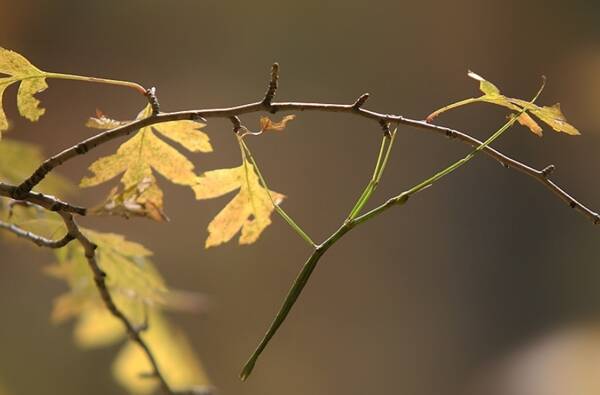Stick insects are the longest insects on earth, generally ranging from 6 cm to 24 cm in length. The longest is 62.4 cm. Stick insects, also known as bamboo whips, or simply "insects" (combined with one word, xiū), belong to the order Orthoptera under the subclass Pterozoa. Their heads are almost as wide as the body, slender and clearly segmented. The body is very similar to a bamboo branch, so it is named because of its slender body, with or without wings. The body is long and large, and it is a medium or large insect. The word Phasmatodea comes from the Greek word "phasma". It means "ghost" and vividly illustrates the ability of this insect to mimic itself into the surrounding branches or leaves.

The body color of most stick insects is dark brown, and a few are green or dark green. This insect often reproduces parthenogenetically, with fewer males and more unfertilized eggs developing into females. When injured, the nymph's legs can fall off on their own and regenerate. High temperature, low temperature, and dark light can make the body color darker. On the contrary, the body color can become lighter. The body color is different during the day and night, becoming a rhythmic body color change.
Stick insects are mostly distributed in tropical and subtropical areas. It inhabits high mountains, dense forests and complex habitats. It has typical mimicry and protective coloration. It is similar to its habitat and is not easily discovered by enemies. Among them, the stick insects are very similar to the twigs of trees, and the leaf stalks are very similar to the leaves of trees. They usually live in grass or trees and feed on leaves. Adult insects can also survive the winter, but most are unable or poor at flying.
There are about 2,200 species of stick insects in the world, and there are about 20 species in China. They live in forests or bamboo forests and are forest pests. Some species also harm crops. There are many species of stick insects, which are mainly distributed in tropical and subtropical regions in my country, mainly in Hubei, Yunnan, Guizhou and other provinces.

The stick insect is a famous master of camouflage. When it perches on a branch or bamboo branch, it looks like a dead branch or bamboo, making it difficult to distinguish. The stick insect's ability to mimic the real thing is called mimicry in biology. Some stick insects fall to the ground after being frightened, and can still pretend to be dead. In the forests of Indonesia, there lives a giant stick insect with a body length of 33 centimeters. It ranks first among the 1 million species of insects in the insect kingdom. The crown of the longest insect in the world belongs to the stick insect.
Stick insects are the most adept at camouflage and possess superb stealth skills. When it climbs on a plant, it can match the shape of the plant with its own body shape and dress up as the imitated plant, branches or leaves. It is so lifelike that it is difficult to find its existence unless you look carefully; at the same time, it can It changes its body color according to differences in light, humidity, and temperature, allowing it to completely blend into the surrounding environment, making it difficult for natural enemies such as birds, lizards, and spiders to detect its presence and stay safe. The stick insect's unique stealth survival behavior is also superior to other insects that are good at mimicry. This crown of invisibility is of course also held by the stick insect.

The longest insect in the world: The spiny-legged stick insect is by far the longest insect in the world. The general body length is 6 cm to 24 cm. The largest is 62.4 cm. Entomologists have described more than 3,000 species of stick insects, and the spiny-footed stick insect is by far the largest of its kind in the world. (Guinness World Records)
animal tags:
We created this article in conjunction with AI technology, then made sure it was fact-checked and edited by a Animals Top editor.